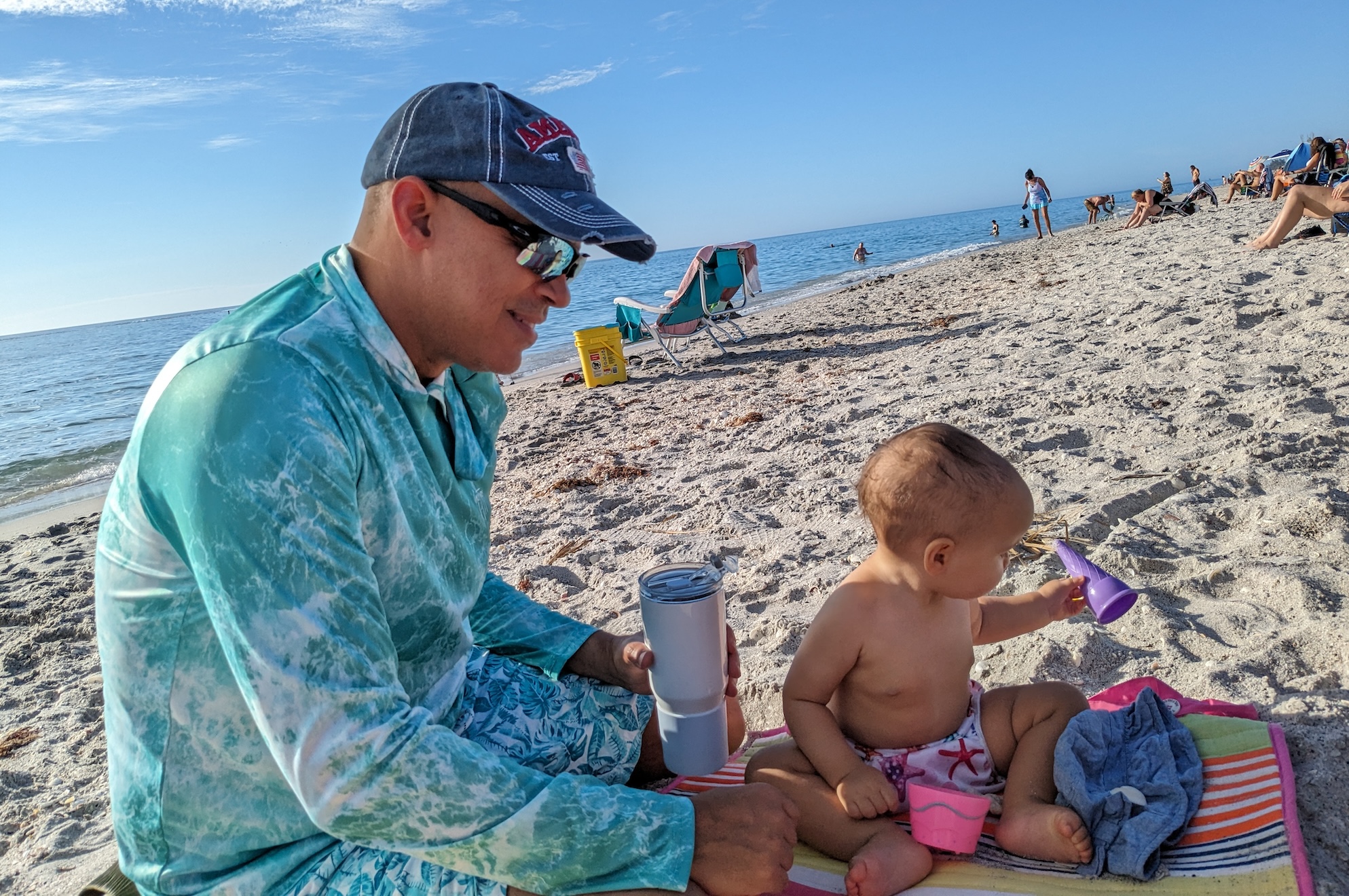Whether you love it or hate it, FIRE (Financial Independence, Retire Early) has inspired many families to rethink their traditional work/life models. If you approach it with an open mind, you’ll notice the advantages of some form of FIRE. When Tatiana and I retired, we took a bold step: we both left our jobs together, setting our last day of work for the same day. This wasn’t a gradual transition—we went from two full incomes straight to none. It was a courageous move that came with unique challenges and rewards. It’s a daunting feeling when you realize the checks will stop coming. Maybe we were young and stupid, LOL, or maybe we were onto something.
While our path was direct, another route to explore FIRE as a family is transitioning from dual income to a one-income household. I know it sounds like we’re taking a page from the 1950s, but it can be a practical step to smoothly transition into the FIRE stage. This approach can soften the emotional rollercoaster that comes with shifting your life entirely, helping you get your finances in order without feeling like you’re running away from something.
Why Transition to a One-Income Family?
Transitioning to a one-income family allows for more intentional living. Perhaps one of you wants to stay home with the kids? I can’t emphasize enough how much better behaved children often are with a parent at home. Perhaps you want to explore homeschooling?

Deciding which parent will stay home is unique to each family. Consider:
- Which parent is needed more for the child, depending on age?
- Who likes their job less?
- If you both equally like your jobs, which brings in more money?
Some families get creative—I know dads who’ve stayed home and started side hustles while the kids were at school. This can be an excellent way to pursue a passion during FIRE. Remember, early retirement doesn’t mean you can’t make money—you do you!
In our case, we took an even more dramatic step by retiring simultaneously. We wanted to be home with our first daughter, Yuna, and break free from the 9-5 grind. While this approach isn’t for everyone, it gave us the freedom to move to a mild climate state and quickly adapt to our new lifestyle.
It’s crucial to see how any money-making activity aligns with your long-term vision. If it doesn’t help you reach your destination while making the journey enjoyable, it may not be worthwhile.
Importantly, transitioning to a one-income family can significantly improve your health and well-being. With less job stress and more time at home, you can focus on preparing nutritious meals, exercising regularly, and spending quality time outdoors with your children. This lifestyle shift often leads to better physical and mental health for the whole family.

Assessing Family Finances Before the Transition
Conduct a Financial Review
Before leaving a job behind, analyze your financial situation thoroughly, including all income sources, expenses, debts, and assets. Try to pay off all consumer debt before making the leap—you’ll feel bold and liberated.
In our case, preparing for dual early retirement required meticulous planning. We not only reviewed our current finances but also projected our needs for several years ahead. We needed to carefully plan because we were cutting off both income streams at the same time.
Understanding Fixed vs. Variable Expenses
List all your expenses, distinguishing between fixed (like mortgage or utilities) and variable (like dining and travel). You may need to cut down drastically on variable expenses, so having them clearly identified is crucial.
Evaluating the Family Budget
Know where every dollar is going. Your finances will be tighter on one income, so leave no stone unturned. Set realistic expectations—we’ll discuss this more later.
Reducing Expenses and Increasing Savings
Frugality as a FIRE Strategy
Don’t confuse being frugal with being cheap. Frugality is about spending wisely and getting the most out of your money while minimizing waste.
In our household, we’re particularly conscious about food waste. Besides being money down the drain, we’re aware that many people struggle to put food on the table. We teach our kids to serve only what they can eat and to finish their plates. Eating mostly organic, pasture-raised, or grass-fed meat makes us more conscious of waste.
Going from two incomes to none required us to embrace frugality even more. We found creative ways to cut costs, such as eating out for lunch instead of dinner—the same meal often costs less earlier in the day. Having children naturally reduced our spending on things like movies or nightlife. We found that home entertainment can be more enjoyable and flexible. Want nightlife? Dress up, play some music at a modest volume, dim the lights, and meet at your home bar with your spouse after the kids go to sleep.
Practical Cost-Cutting Measures
Given that grocery prices have soared over the past few years, meal prep becomes crucial. With more time at home, you can cook healthier, more cost-effective meals. When you don’t feel like cooking, even takeout can save you money on tips compared to dining in.
Consider downsizing to one vehicle if possible. If you’re homeschooling or working from home, this could lead to significant savings on car costs, gas, insurance, and maintenance.
Childcare is another major expense you can eliminate. By caring for your children yourself, you can save thousands of dollars while providing personalized care and education.
With less job stress, you might find more enjoyment in free or low-cost entertainment. When we worked corporate jobs, we often felt compelled to spend more on entertainment to decompress. Now, we find joy in simpler, less expensive activities.

Boosting Savings Rates
Even on one income, saving for FIRE is possible. Remember, reducing your income often lowers your tax bracket, potentially saving you money.
Tax Efficiency for One-Income Families
Maximize tax-advantaged accounts like 401(k)s and HSAs. These not only help you save for the future but can also reduce your current tax burden. In our case, we wish we’d had saved more in our HSAs. We didn’t know much about them at the beginning of our saving journey.
The Emotional Impact of a One-Income Transition
Being a stay-at-home parent is challenging. There is an endless list of tasks, and it is critical that you discuss how you will manage them as a family. Involve the kids in age-appropriate ways. There will be pressure from all sides, so communication is key.
Maintaining balance and finding coping strategies is vital. It can take time to adjust, but focusing on your new lifestyle can help you get through it.
In our case, both of us retiring at the same time meant that our daily routines had to change significantly. Fortunately, our personal identities weren’t strongly tied to our jobs, making the shift easier. For those whose identities are intertwined with their work, it’s important to look forward to new opportunities and ways to find fulfillment.
Finding Fulfillment Beyond Income
Remember, money is a means to an end. Society often programs us to equate spending with fun, but there are countless non-monetary aspects of life to enjoy. A simple walk in the neighborhood can be rejuvenating—just breathe the fresh air and take in your surroundings.
Use your newfound time for personal growth, productive pursuits, and quality time with your children. They grow up fast, so cherish these moments while you can.
Preparing for the Unexpected
Building an Emergency Fund
Before making the transition, build a solid emergency fund. Aim for six months of expenses, but at minimum, have three months in a high-yield savings account. As your investment portfolio grows to cover years of spending, it becomes your extended emergency fund.
In our case, having a substantial emergency fund was crucial when we both retired. Before taking the plunge, we made sure we had a healthy cash buffer and more than 25 years of spending saved in our retirement accounts. This gave us peace of mind during the transition.
Insurance Considerations
Carefully evaluate your insurance needs, particularly life and health insurance. If one partner has good health insurance through work, factor this into your decision-making process.
Flexibility and Contingency Planning
FIRE provides more options and flexibility than traditional retirement planning. Be willing to adjust your plans as circumstances change. It’s okay to pivot when new information arises—we don’t have a crystal ball, after all.
Staying the Course and Monitoring Progress
Regularly check in with your spouse about your progress. Continue tracking your spending and net worth. Celebrate small wins to stay motivated. Life will bring unexpected changes, so keep your FIRE goal in sight while remaining adaptable.

Final Thoughts
Transitioning to a one-income family in pursuit of FIRE is a bold move with both challenges and rewards. It requires careful planning, open communication, and adaptability. While daunting at first, the potential benefits of increased family time, reduced stress, and a more intentional lifestyle can be immeasurable.
Remember, FIRE isn’t about deprivation or rigid rules. It’s about creating a life aligned with your values and goals. Whether you transition gradually or leap suddenly as we did, the key is to stay focused on your long-term objectives while enjoying the journey.
While our journey involved retiring together rather than transitioning to a single income, many principles remain the same. Be prepared, stay flexible, and fully embrace your new lifestyle.
As you venture down this path, lean on your community for support. Connect with other families on similar journeys, share experiences, and learn from each other. Your FIRE path may look different from others, and that’s okay. The beauty of this journey is that it’s uniquely yours.





